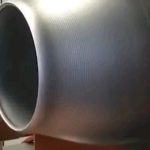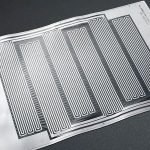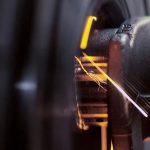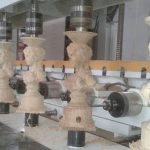01
Processing Equipment
1. Ordinary lathe:
Lathes are mainly used to process shafts, disks, sleeves and other workpieces with rotating surfaces, and are the most widely used type of machine tool processing in mechanical manufacturing. (Achievable accuracy 0.01mm)
2. Ordinary milling machine:
It can process planes, grooves, various curved surfaces, gears, etc., and can also process more complex profiles. (Can achieve precision 0.05mm)
3. Grinder
A grinder is a machine tool that grinds the surface of a workpiece. Most grinding machines use high-speed rotating grinding wheels for grinding, and a few use other abrasives such as oil stones, abrasive belts, and free abrasives for processing, such as superfinishing machine tools, abrasive belt grinders, grinding machines, and polishing machines. (Achievable precision 0.005mm, small parts can achieve 0.002mm)
4. Fitter
Bench work mainly includes filing, sawing, scribing, drilling, reaming, tapping and threading, scraping, grinding, straightening, bending and riveting, etc.
5. CNC lathe
Mainly process batch products, high-precision parts, etc. (Achievable accuracy 0.01mm)
6. cnc milling machine
Mainly process batch products, high-precision parts, complex parts, large workpieces, etc. (Achievable accuracy 0.01mm)
7. Wire cutting
The electrode used in slow wire walking is brass wire, and the middle wire is molybdenum wire. Slow wire-feeding processing has high precision and good surface finish. Process some fine holes, fine grooves, etc. (Slow wire walking can achieve an accuracy of 0.003mm, and medium wire walking can achieve an accuracy of 0.02mm)
8. Spark machine
EDM can process materials that are difficult to cut by ordinary cutting methods and workpieces with complex shapes (such as groove corners of molds, small holes, deformed holes, and machining on cemented carbide), without cutting force during processing, without burrs and tool marks Defects such as grooves. Not affected by material hardness, not affected by heat treatment conditions. (Achievable accuracy 0.005mm)
02
process flow
The machining process specification is one of the process documents that stipulates the machining process and operation methods of parts. It is to write a more reasonable process and operation method into a process document in a prescribed form under specific production conditions. guide production.
The mechanical processing process of parts is composed of many processes, and each process can be divided into several installations, stations, steps and cutting tools.
Which processes need to be included in a process is determined by the structural complexity of the processed parts, the processing accuracy requirements and the production type.
Different production quantities have different processing techniques.
Process knowledge
- 1) General milling of holes with an accuracy less than 0.05 cannot be done, and cnc machining is required; if it is a through hole, wire cutting can also be used.
- 2) The fine hole (through hole) after quenching needs wire cutting processing; the blind hole needs rough machining before quenching and finishing after quenching. The non-fine hole can be done in place before quenching (leave a quenching allowance of 0.2 on one side).
- 3) Grooves with a width of less than 2MM require wire-cutting processing, and grooves with a depth of 3-4MM also require wire-cutting processing.
- 4) The minimum allowance for rough machining of quenched parts is 0.4, and the allowance for rough machining of non-quenched parts is 0.2.
- 5) The thickness of the coating is generally 0.005-0.008, and the processing should be based on the size before plating.
03
Craft hours
The time quota is the time required to complete a process, which is an indicator of labor productivity. According to the time quota, the production operation plan can be arranged, cost accounting can be carried out, the number of equipment and staffing can be determined, and the production area can be planned. Therefore, the time quota is an important part of the process specification.
The time quota should be determined according to the production technology conditions of the enterprise, so that most workers can achieve it through hard work, some advanced workers can exceed it, and a small number of workers can reach or approach the average advanced level through hard work.
With the continuous improvement of the production and technical conditions of the enterprise, the time quota is regularly revised to maintain the average advanced level of the quota.
The time quota is usually combined by craftsmen and workers, and directly estimated and determined by summarizing past experience and referring to relevant technical data. Or it can be calculated after comparative analysis based on the time quota of workpieces or processes of similar products, or it can be determined through the measurement and analysis of actual operating time.
Process working hours = preparation working hours + basic time
Preparation time is the time spent by workers getting familiar with process documents, receiving blanks, installing fixtures, adjusting machine tools, and dismantling fixtures. Calculation method: Estimate based on experience.
The base time is the time it takes to cut away the metal.
04
Quotation cost calculation method
Processed piece cost = (material cost + processing cost) * 1.2
[The coefficient of 1.2 includes management fee]Equipment cost = (material cost of processed parts + processing fee + purchase fee + assembly commissioning fee + design fee) * 1.2
[The coefficient of 1.2 includes management fee]Material cost = weight (density * volume) * unit price (yuan/kg)
Processing fee = process working hours * unit price (yuan/hour)
Purchase price in Japan (yuan) = purchase price (yen) / exchange rate
The cost of domestic procurement is based on the supplier’s quotation
Design fee = working hours * unit price (yuan/hour)
Quotation information:
- 1) Lathe: 60 yuan/hour
- 2) Milling machine: 60 yuan/hour
- 3) Grinder: 60 yuan/hour
- 4) Fitter: 80 yuan/hour
- 5) Machining center: 60-120 yuan/hour
- 6) CNC lathe: 60-120 yuan/hour
- 7) Spark machine: 80-150 yuan/hour
- 8) Slow wire cutting: 60-150 yuan/hour; starting at 80 yuan for small pieces, and 0.06-0.08 yuan/mm2 for large pieces
- 9) Pore discharge: carbon steel, tungsten steel, Ф0.3 and above 1 yuan/mm, Ф0.3 and below 2-3 yuan/mm; Ф0.3 and above 1.8-2 yuan/mm
- 10) Management fee: cost price * 0.2






